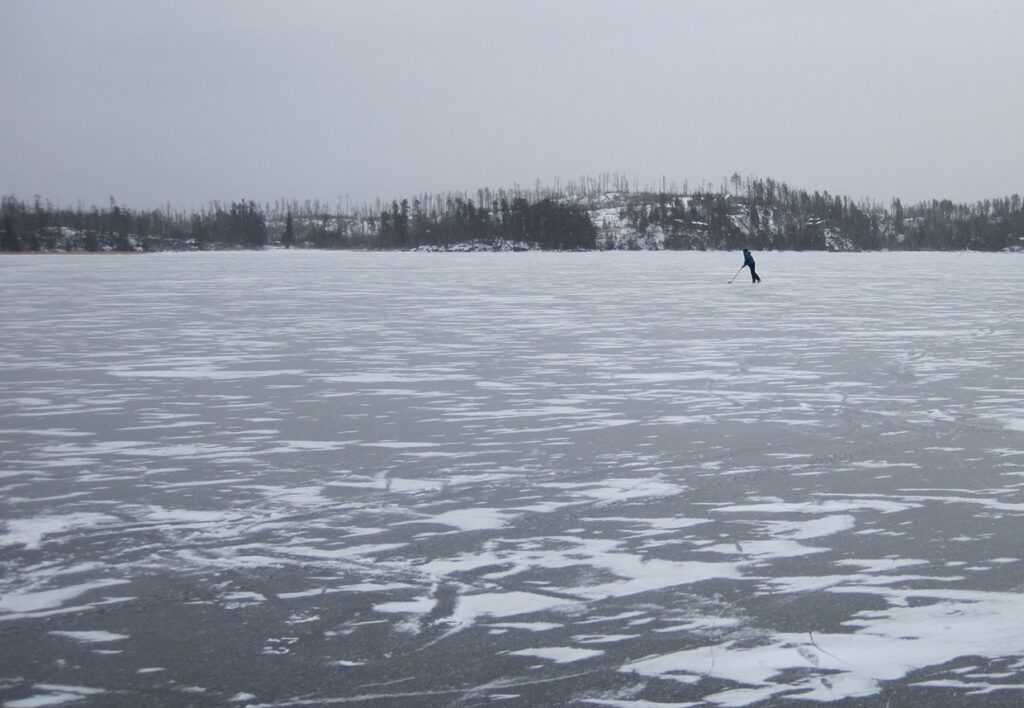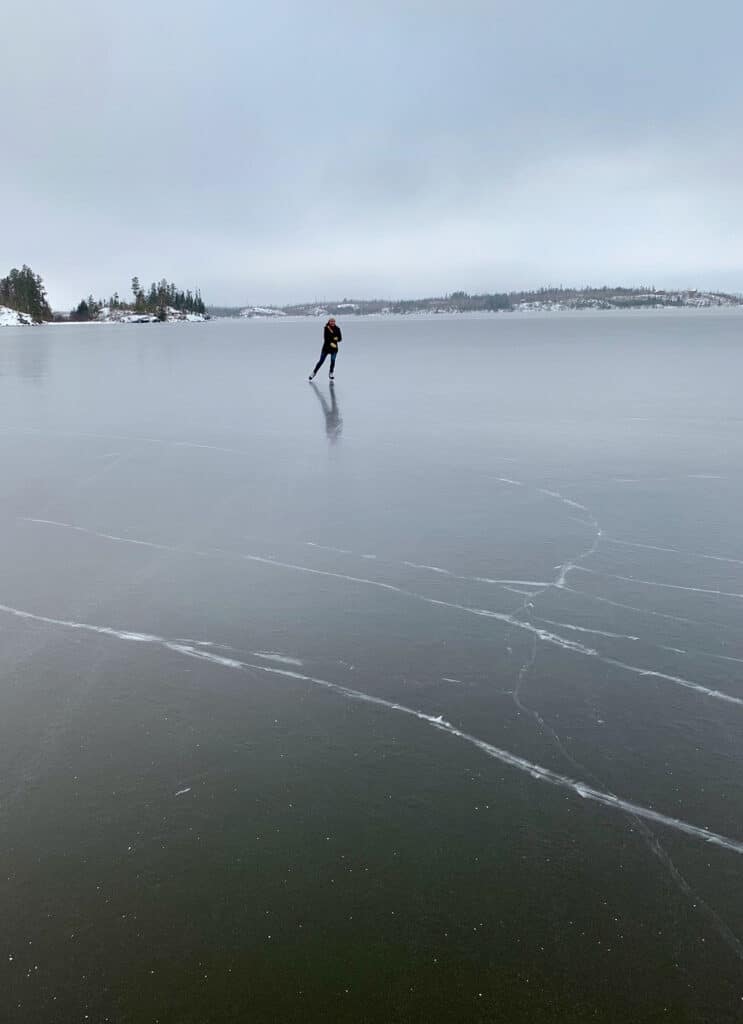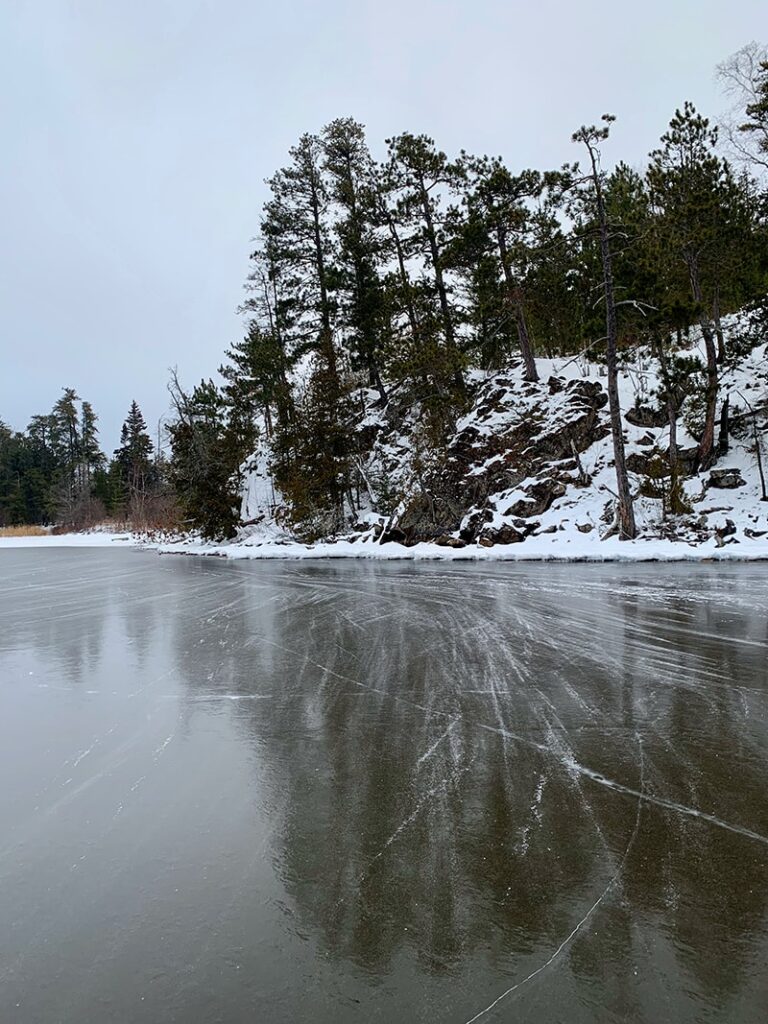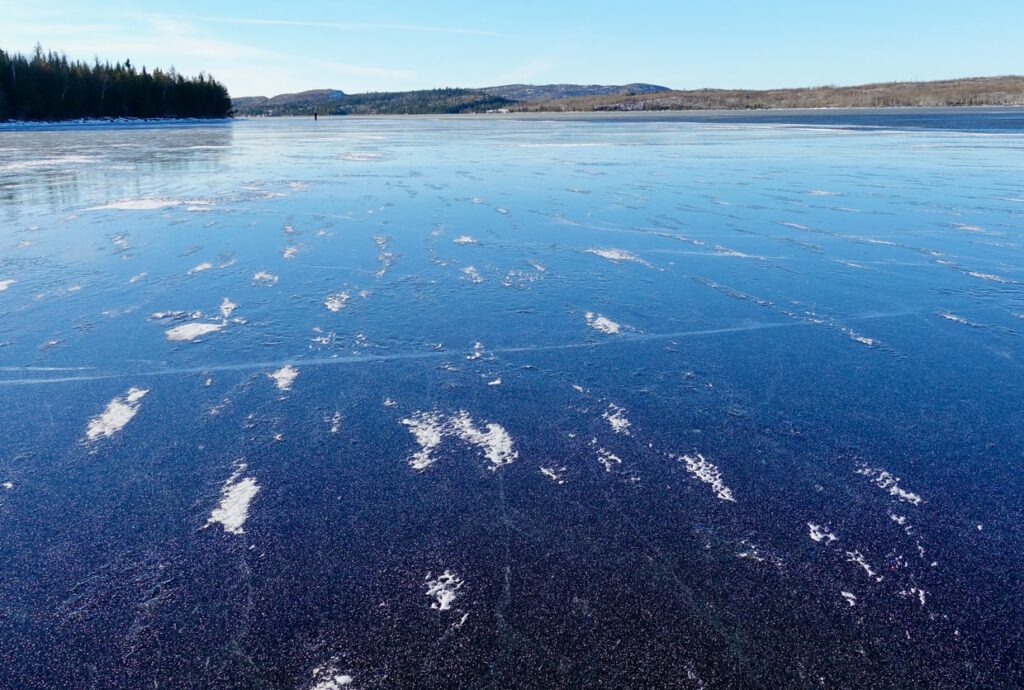
It’s a season so magical it doesn’t even come every year: it’s ice skating season in the Boundary Waters.
If it happens, the Boundary Waters lake skating season starts in mid to late November and occasionally stretches into mid-December depending on snowfall and a myriad of other weather factors. But speculation about this year’s lake skating starts in early October, said Bill Hansen, former owner of Sawbill Canoe Outfitters.
“There’s a network locally of people interested in lake skating,” he said. “That first week of October, you start running into people in town and you’ll say ‘what do you think, is it going to be a good ice year?’”
Cook County resident John Oberholtzer is the unofficial head of that network. He’s been seeking out prime lake skating conditions, which he calls “wild ice,” for over two decades.
“There’s a feel in the air,” Oberholtzer said. “We’ll get a few cold, cold nights with no wind and I’ll think ‘it’s ice skating season.’ It’s this magical moment that opens up between paddling and skiing in the Boundary Waters.”
The smooth, glassy black ice coveted by lake skaters isn’t really rare, but several weather factors need to align for it to form, said Luigi Romolo, a Minnesota State Climatologist for the Department of Natural Resources Division of Ecological and Water Resources.
“You need really, really cold temperatures that are almost subzero for several days,” he said. “The calmer the conditions the more likely you’ll get black ice.”
If it’s too windy as lakes freeze air gets incorporated into the forming ice creating a bumpy, cloudy surface, Romolo said.
Even after a lake freezes over in black ice, it often isn’t thick enough to support human activity so lake skaters play an anxious waiting game all the while hoping it doesn’t snow. Not only does snow cover insulate the ice and slow down the ice’s growth, said Romolo, it also masks any cracks in the ice, creating safety concerns.
Nothing compares
Lifelong Lutsen resident Kjersti Vick calls lake skating her “most favorite niche Cook County activity” and she’s one of those crossing their fingers in November for smooth, safe, snow-free lake ice.
“After about a week or two of freezing temperatures, I start regularly checking webcams and local lakes for signs of ice,” she said. “Typically, this process starts in early November and usually around Thanksgiving a few lakes will be ready to skate.”
Both Hansen and Oberholtzer described themselves as rink rats in their youth and both agree that nothing compares with the freedom found on a wilderness lake covered in black ice.
“You can travel so effortlessly and so far,” said Hansen. “Good skaters can move up to 30 miles per hour on lakes. At its peak, you’re basically doing canoe trips, but in ice skates.”
Oberholtzer’s most epic Boundary Water lake skating adventure started on Brule Lake a few years back. His group decided to see what ice conditions were like beyond Brule, so they started skating and portaging through the chain of small lakes, including Cam and Town Lakes, between Brule and Cherokee.
“Then we were sitting on Cherokee Lake having lunch and someone said, ‘Let’s see if we can make it to Sawbill,'” he remembered. He’s not sure how they got so lucky, but even the little creeks along the way to Sawbill were frozen perfectly for skating.
Other Boundary Waters canoe routes he’s done on skates include a much shorter circle starting on West Bearskin and going up into Duncan, over to Rose Lake, and looping back through Daniels.
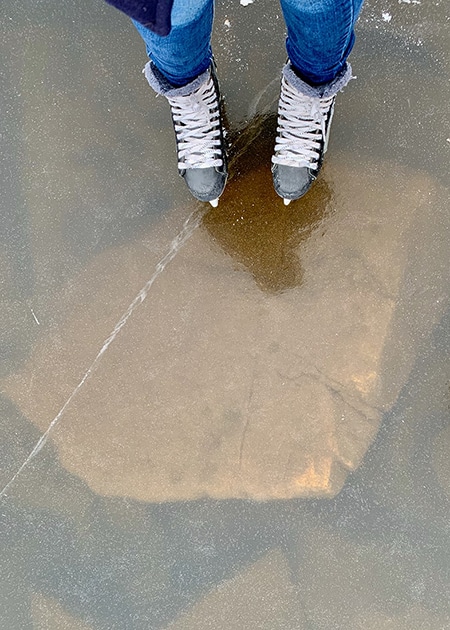
The right skates
Most lake skaters prefer hockey skates since, “the toepick of figure skates have an increased tendency for catching on a rougher surface,” said Vick. For skaters who really want to cover distance in the Boundary Waters, Nordic ice skate blades have revolutionized lake skating said Hansen. Up to 20 inches in length, these long blades resemble speed skates and simply snap onto cross-country ski boots.
Although they’re not as maneuverable as hockey skates, Oberholtzer said Nordic blades have distinct advantages on wild ice. For one thing, the long blades create a smoother ride over any rough ice and they’re less likely to catch in cracks. Also, when you reach a portage, “you can just pop them off and scamper across,” he said.
The Minnesota DNR recommends a minimum four inches of lake ice for activities like ice fishing or ice skating. Romolo said just because the ice is thick enough to skate in one part of the lake, doesn’t mean the entire lake is safe from human travel.
“The ice could be a foot in one place and just a couple inches in another,” he said. “It seldomly forms uniformly. How the ice forms in certain places on the lake depends on how lake bed is formed, how shallow it is, if there’s turbulence from fish, and lots of other factors. Ice is never 100 percent safe.”
Ice picks or ski poles with carbide tips, a throw rope, a pack with dry clothes, and always skating with at least one other person are among lake skaters’ safety tips. Vick recommends checking the ice depth continually as you skate around.
“An easy way to test ice depth is to use a handheld power drill with a wide bit to create a test hole,” she said. “If you don’t have a drill, look at the cracks in the ice to get an idea of the depth. When starting on a new lake, stay near shore and avoid areas where a stream meets the lake, incoming water could weaken the ice.”
She also recommends using your ears when determining ice safety. While ice naturally booms and pops as it forms, she said, “If you hear a crackle underfoot that may be an indicator of weak ice and you should head to shore immediately.”
Everything waits for wild ice
Oberholtzer said you can almost find skate-able “wild ice” somewhere in the early winter, but it takes a lot of time to find the lakes where the ice is just right. That’s why lake skating enthusiasts rely on each other to get the word out about good lake skating when they find it. Wild ice often doesn’t stick around. One snow storm or freezing rain event can mar the surface and put lake skating on hold until next year.
“That’s part of the magic,” Hansen said. “If the lake skating is good somewhere, you basically put your life on hold and go skating. School can wait. Work can wait. Getting out on the ice is more important than pretty much anything else.”
Editor’s Note:
The Minnesota DNR says “Ice is never 100% safe” – before venturing out, check their web site for more information on ice safety and when in doubt, stay on shore.
